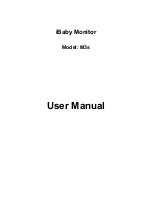
36
37
mmH g
mmH g
/min
mmH g
mmH g
/min
1
2
2 Confirming the user ID, press the “
”button to recall the records ; press the “
”button
to measure.
MEASUREMENT
Tie the cuff
1. Remove all jewellery, such as watches and bracelets from your left arm.
Note: If your doctor has diagnosed you with poor circulation in your left arm, use your right arm.
2. Roll or push up your sleeve to expose the skin. Make sure your sleeve is not too tight.
3. Hold your arm with your palm facing up and tie the cuff on your upper arm, then position the tube
off-centre toward the inner side of arm in line with the little finger. Or position the artery mark over
the main artery (on the inside of your arm). Note: Locate the main artery by pressing with 2 fingers
approximately 2 cm above the bend of your elbow on the inside of your left arm. Identify where the pulse
can be felt the strongest. This is your main artery.
4. The cuff should be snug but not too tight. You should be able to insert one finger between the cuff and
your arm
5. Sit comfortably with your tested arm resting on a flat surface. Place your elbow on a table so that the
cuff is at the same level as your heart. Turn your palm upwards. Sit upright in a chair, and take 5-6 deep
breaths.
6.
Helpful tips for Patients, especially for Patients with Hypertension:
• Rest for 5 minutes before first measuring.
• Wait at least 3 minutes between measurements. This allows your blood circulation to recover.
• Take the measurement in a silent room.
• The patient must relax as much as possible and do not move and talk during the measurement
procedure.
• The cuff should maintain at the same level as the right atrium of the heart
• Please sit comfortably. Do not cross your legs and keep your feet flat on the ground.
• Keep your back against the backrest of the chair.
• For a meaningful comparison, try to measure under similar conditions. For example, take daily
measurements at approximately the same time, on the same arm, or as directed by a physician.















































